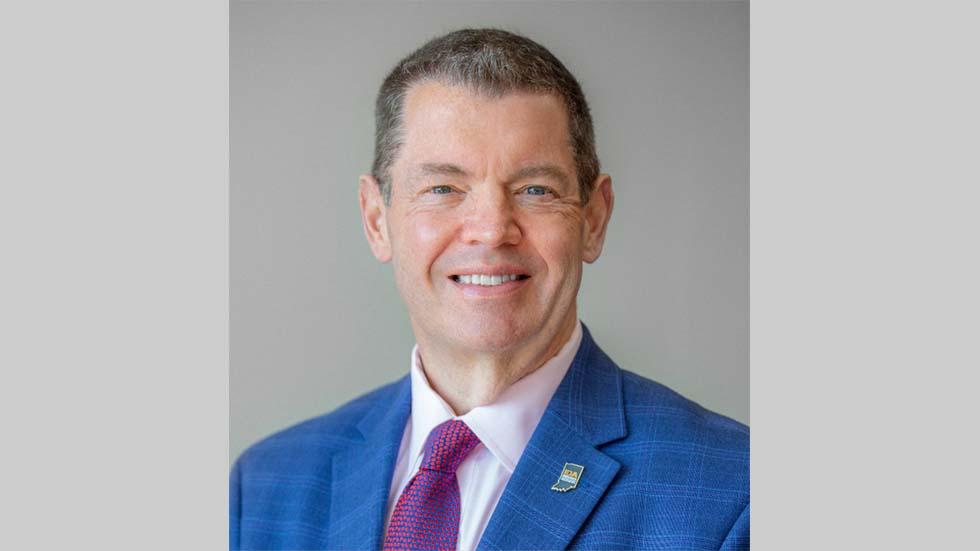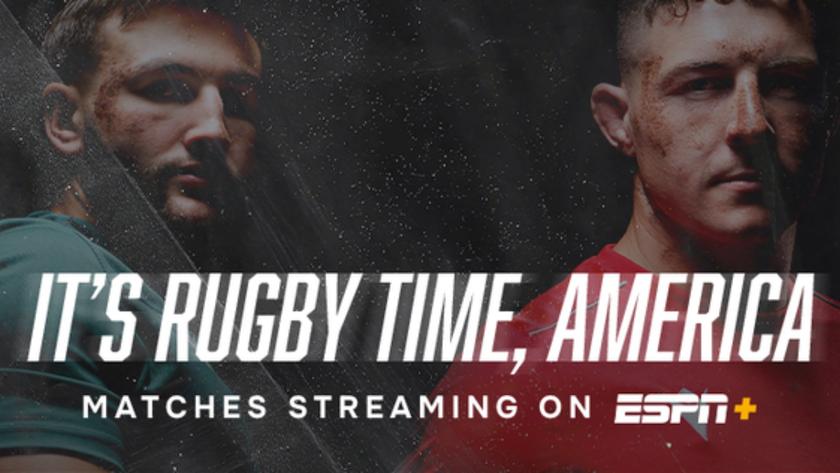New AWARN Alliance Chief Speaks Out on Advanced Alerting’s Challenges
Dave Arland discusses his top priorities for the alliance and why he was up for the job

The AWARN Alliance last month appointed Dave Arland as its new executive director, succeeding longtime leader and ATSC 3.0 advocate John Lawson.
Much like ATSC 3.0, the alliance has had its share of ebbs and flows as NextGen TV continues its slow, steady march in terms of markets covered and sets sold—especially with a tipping point in NextGen TV sales anticipated to be at hand.
Arland comes to the alliance at a crucial time for NextGen TV generally and advanced emergency alerting and information in particular. Nearly 80% of U.S. households are now covered by an ATSC 3.0 signal. But like most everything else 3.0, advanced alerting can’t reach its full potential until a workable 1.0 sunset becomes reality.
The new executive director has a full plate of AWARN priorities to tackle—from shoring up alliance membership and advising the incoming administration on the benefits of 3.0-based emergency alerting to demonstrating to policymakers and citizens the benefits of NextGen TV-based warnings with real-world implementations and educating newsrooms about how they can leverage advanced alerting to better serve the public.
Arland opens up about these and other important issues in this Q&A. An edited transcript follows.
TVT: What are your top priorities for the AWARN Alliance as its incoming executive director?
Dave Arland: I think there are probably three things we need to do. The first is to recognize that, as with any transition, something of this magnitude takes time. For those of us involved in ATSC 3.0, it feels like it’s been a long time. But I’m old enough to remember the first digital TV transition that took many times longer than this, and we didn't have the capability to do new things. So, I think the first step is to position advanced emergency alerting and information as something that can ride the second wave of ATSC 3.0—if you view the first wave as just getting on air.
Get the TV Tech Newsletter
The professional video industry's #1 source for news, trends and product and tech information. Sign up below.
We’re almost at 80%. Right now, 76% of households in America can see at least one ATSC 3.0 signal. There are lots of numbers in this transition, but that’s an important one. So, the first step is just to understand that we’re up next, from a batter-up perspective. You can’t do any of this without being on the air.
So, at least stations are on the air, and they’re starting to add new functionality like high dynamic range and Dolby Atmos. The AWARN capability, generically, is tied to the fact that ATSC 3.0 broadcasts are such that they are also connected to the internet, so you’ve got over the top and over the air. One of the advantages of being connected is that you can know where your receiver is, so you can deliver alerts and information to an individual set or receiver based on where it is.
The second step is to find a way to better demonstrate what we're talking about here. It’s been a lot of concepts up to this point, and I know that there are some broadcasters who are pretty close to being able to deploy some of this technology. Being able to demonstrate this is a key ingredient for the future—almost like Hansel and Gretel and the breadcrumbs. I think broadcasters have to be shown this is a new capability.
Once we are able to demonstrate advanced emergency alerting and information, the third thing is to show broadcasters that this can be another way to enhance their public-service mission. One of the things we’re given as broadcasters is spectrum with the trade-off being that we have to serve the public. Providing an enhanced way to do that generically, under the umbrella term of AWARN, is certainly one key benefit that can be added. So, ATSC 3.0 has better picture quality, better audio and also enhanced capabilities, particularly for stations with news departments to reach people with additional, relevant information.
All of us know emergencies are going to continue to happen. Whether it’s the fires in Hawaii, the floods in North Carolina, the hurricanes that strike the coasts—where I live the tornados we’re always on the lookout for—those things are going to continue to happen. Alerting can be better from a television perspective, and that’s what we hope to demonstrate, especially because there are more people buying sets that have the ability to receive ATSC 3.0 signals.
TVT: While you mentioned the importance of the internet connectivity of NextGen TVs with respect to delivering geo-targeted emergency alerts and information, there is also an important over-the-air component to 3.0. Before the OTA aspects of 3.0 can be fully leveraged, the 1.0 logjam needs to be cleared somehow. Do you expect resolution to this issue anytime soon?
DA: I’m hopeful that a change in leadership at the FCC will mean a focus on the future for over-the-air broadcasting. It’s the sort of thing that requires some important decisions from the FCC in concert, obviously, with broadcasters.
We have done what we pledged to do, which was to collaborate and to make it work as best we can. But that only goes so far. You can't get to 100% in terms of household reach with the current setup—not while also transmitting 1.0. So, there’s got to be a way forward.
I think that’s part of the mission the Future of Television Task Force was working on. I know that report hasn’t come out yet. Hopefully it will come out soon, and then there will be a way forward with the new commission so that broadcasters see some certainty [regarding a 1.0 sunset].
The more specific the warnings going out, the more people are likely to pay attention. I look at advanced emergency alerts and information as a way for stations to put modern technology to use in a manner that enhances what they're already doing.”
Dave Arland
All of these things are interconnected. There is an order of business in the sense that you have to be transmitting to make this work. You have to have receivers that people are actually using and buying and tuning, and you have to have antennas that are connected to those receivers in order for it to be optimal.
Even with all of those things, it is a medium that requires electricity. If the power is out everywhere, the real benefit is warning people in advance that something is coming. The more specific the warnings going out, the more people are likely to pay attention. I look at advanced emergency alerts and information as a way for stations to put modern technology to use in a manner that enhances what they’re already doing.
TVT: President-elect Donald Trump regularly stated when concluding his rallies that one of his goals is “to make America safe again.” Will you, as the new leader of the AWARN Alliance, reach out to the incoming administration to bring it up to speed on advanced emergency alerting and how it fits into that stated goal?
DA: Yes, I will, and I think that story needs to be told, but it has to be something where I can pull an arrow out of the quiver. We have to be able to show policymakers something beyond the concept. The concept is a good concept, and it’s what the standard is built upon. But it’s got to be more than conceptual.
People have to understand how this is going to help their local communities, or, if I’m a broadcaster, how it’s going to help me retain viewers.
TVT: You bring up demonstrations. A few years back, News-Press & Gazette demonstrated at NAB how 3.0 advanced alerting could be used. In that case, it was a demo related to the mudslides in Santa Barbara, California. Is that the type of thing you have in mind?
DA: That’s part of it. The approach should be two-pronged. That was demonstrating the concept, but it’s also necessary to demonstrate the actual implementation. I think we’re close to being able to implement advanced emergency alerting and information. At least that’s my hope based on the people who’ve been working on this for some time. That’s where the rubber meets the road.
It will also have to involve people in TV-station newsrooms, the people who are actually going to hit the button and let the public know of an emergency—whether that’s the meteorologist, the weather team, an assignment editor or whomever. They need to warm up to this idea, and we need to let them know it exists and what’s possible.
TVT: How healthy is AWARN Alliance membership? I think the alliance lost some broadcaster group members a little more than a year ago.
DA: That’s one of our challenges, to try to bolster the membership and get people involved—some of whom never left, some of whom left for whatever reason.
Maybe they just weren’t seeing the progress they hoped for. Maybe they had other priorities. I don’t know.
But, you know, I'm actually very bullish on it, because I think it is logical now that we have so many stations transmitting NextGen TV. Most of those are connected in some way to a newsroom that would be monitoring and making people aware of emergencies.
TVT: Why did you take on the AWARN Alliance leadership role?
DA: I was asked if I would consider it. I'm sort of a human Venn diagram in the sense that I represent—and I’m going to continue to represent—the Indiana Broadcasters Association. I work for Pearl TV, and I work for ATSC itself.
So, I already have a pretty good working relationship with many of the people who have been plugged into AWARN, as well as the people who set the standards and the broadcasters who implement them—all the way down to the local level.
I’m also co-chair of the EAS committee of the National Alliance of State Broadcasters Associations. I’ve been in front of the FCC, talking about making sure our state EAS plans are understood, and working through their process. I also work with the National Weather Service locally.
There’s a lot of potential benefit from having somebody who speaks the lingo, is involved with the transition and came out of an electronics background. That’s why I was interested and the AWARN steering committee agreed—hence the offer and the acceptance.
Phil Kurz is a contributing editor to TV Tech. He has written about TV and video technology for more than 30 years and served as editor of three leading industry magazines. He earned a Bachelor of Journalism and a Master’s Degree in Journalism from the University of Missouri-Columbia School of Journalism.



